How to Effortlessly Lubricate Your Garage Door for Peak Performance (Guide)
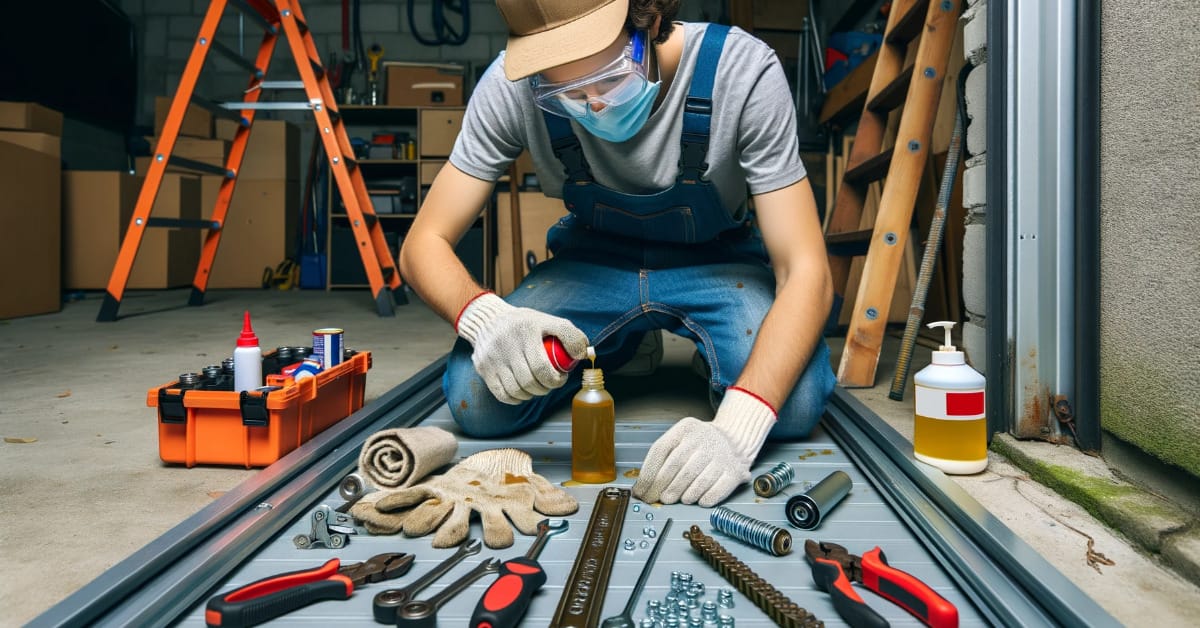
Alright, folks! Giving your garage door a good ol’ lube job is like giving it a VIP ticket to smooth operation city. And who wouldn’t appreciate a bit of peace and quiet by cutting down on that grating noise? Let me share my best tips for keeping my garage door gliding like a champ.
- 🛠️ Step 1: Track Cleanup
- 🔧 Step 2: Hinge and Roller Lubrication
- 🛢️ Step 3: Bearing and Spring Care
- 🔗 Step 4: Rail and Armbar Attention
- 🔑 Step 5: Lock Lubrication & Test Run
I’ll unveil the essential toolkit, highlight crucial safety steps, and round it off with maintenance magic to keep that door performing like a rockstar!
Before You Begin
Before lubricating your garage door for peak performance, let me share a few things to consider. Trust me, taking these precautions will make your life easier!
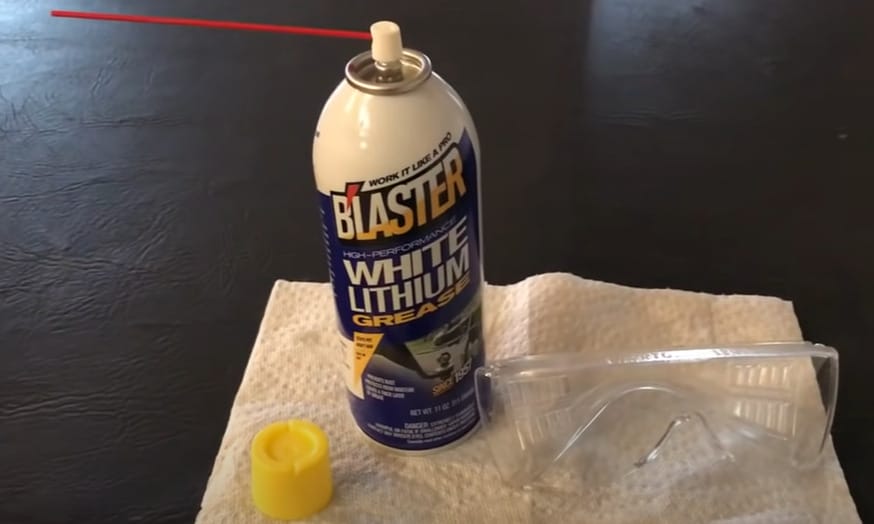
Materials:
- Garage Door Lubricant: Choose a product specifically designed for this task. Avoid WD-40 or regular oils. Opt for white lithium grease or a silicone spray for the best results.
- Clean Cloth: Needed for wiping down surfaces after cleaning.
- Mild Detergent & Warm Water: These will be mixed together for cleaning.
- Sponge: To apply the cleaning solution to the garage door tracks.
- Vacuum Cleaner: Useful for removing debris from the tracks.
Safety Gear:
- Gloves: Wear these to protect your hands during cleaning and lubrication.
- Safety Goggles: Protect your eyes from any potential debris or accidental sprays.
Other Tools:
- Ladder or step stool: To reach the higher parts of the door.
Step 1: Clean Your Garage Door Tracks
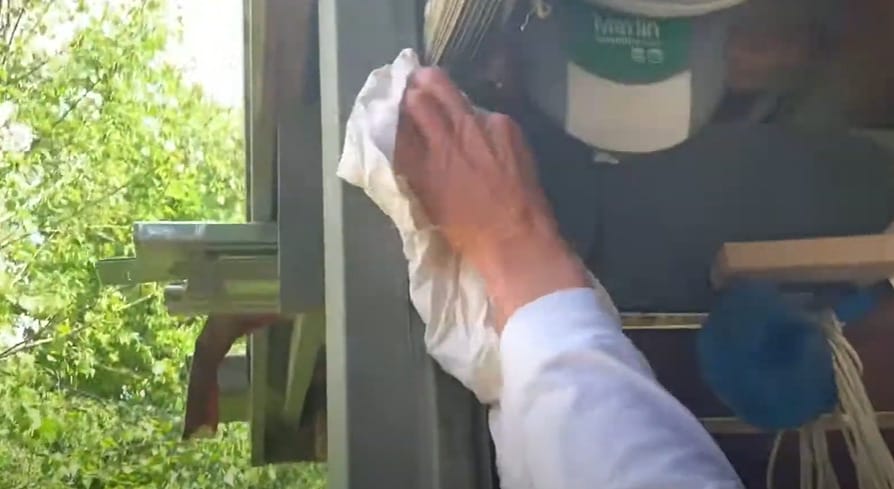
I can’t stress enough the importance of keeping your garage door tracks clean! The tracks help your door glide smoothly when opening and closing. However, don’t lubricate them; keep them clean.
- Step 1: Use a vacuum to remove dust and any large debris from the tracks.
- Step 2: Grab a damp rag to remove dirt or dust.
- Step 3: If you encounter stubborn, stuck-on messes, use an automotive brake cleaner to loosen and remove them.
Caring for your garage door tracks ensures your door can move effortlessly along the metal track when needed. And that’s just perfect for a smooth-operating garage door.
Step 2: Lubricate Door Hinges and Rollers
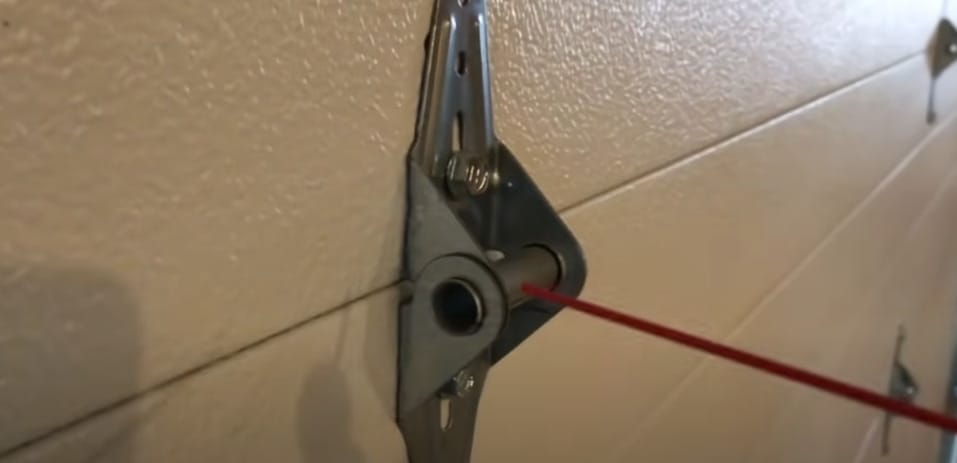
Now that we’ve got everything ready let’s go on and lubricate those door hinges and rollers.
- Step 1: Grab your trusty garage door lubricant. Make sure you choose a silicone-based lubricant or one specifically designed for garage door rollers.

- Step 2: Apply a small amount of lubricant to the pivot points of the hinges, making sure not to overdo it. A little goes a long way!
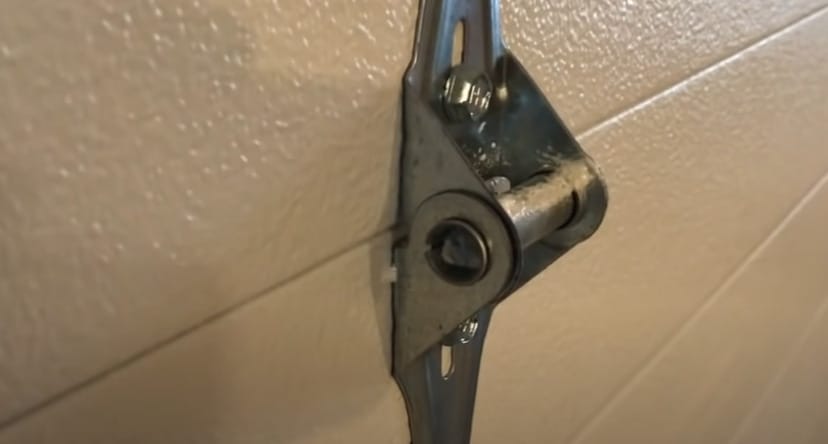
- Step 3: Next, I move on to the garage door rollers. If you have nylon rollers, lubricate the bearings only and avoid getting any lubricant on the nylon. Metal rollers should be lubricated more thoroughly.
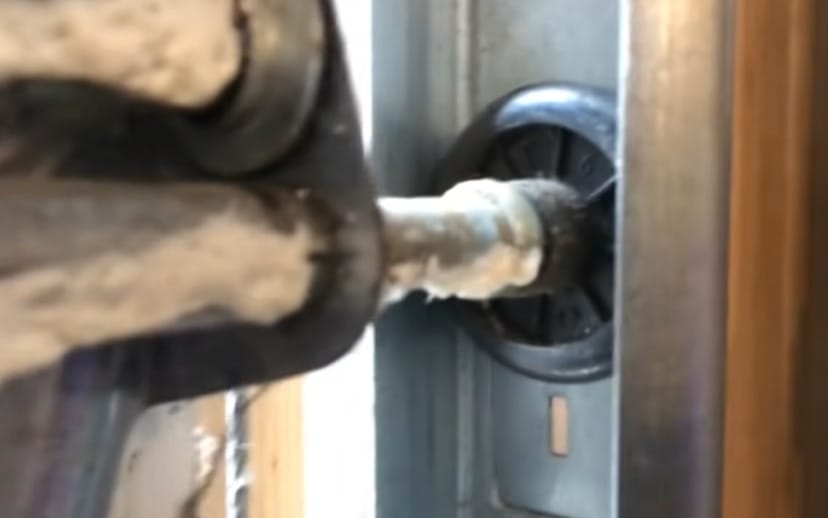
- Step 4: After applying the lubricant, I gently wipe away any excess to prevent dripping and keep my garage looking spick and span!
Voilà! Like that, you’ve effortlessly lubricated your garage door hinges and rollers. Proper maintenance, my friends, is the key to peak performance. Now, let’s keep rocking and move on to the next step!
Step 3: Lubricate Bearing Plates and Springs
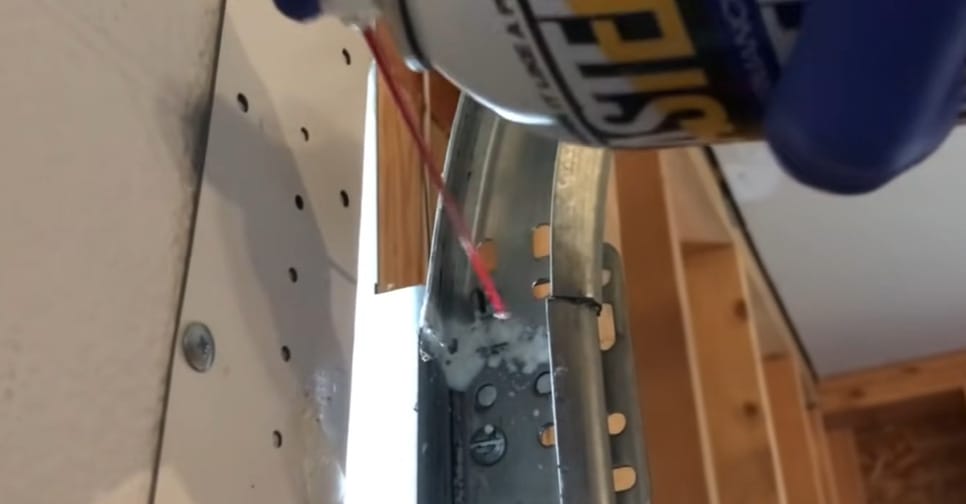
Alright, now let’s tackle those bearing plates and springs! First, grab your step ladder. You’ll notice that most garage doors have sprung up along the top, with circular-shaped bearing plates on each side.
You’ll want to lubricate the bearing plates and springs to ensure your garage door works smoothly.
- Step 1: Give those parts a good spray or wipe with grease.
- Step 2: Open your garage door – this helps the grease spread evenly. Now, keep an eye out for any bent or damaged springs.
- Step 3: If you spot any issues, they must be replaced. But let me warn you: replacing garage door springs can be challenging. So, for your own safety, please bring in a qualified professional to handle it.
Step 4: Applying Lubrication to the Top Rail and Arm Bar
Now that we’ve covered the basics, let’s move on to the crucial part: lubricating the top rail and arm bar. Here’s how to do it effortlessly for your garage door’s peak performance!
- Step 1: Ensure your garage door is closed and disconnected from the power source. Safety first, folks!
- Step 2: For the top rail, about 6-8 inches below the ceiling, grab your lubricant and apply a generous amount along the entire length. The top rail is vital since it runs vertically close to the ceiling, guiding your garage door as it moves.

- Step 3: Now, let’s move on to the arm bar. This part connects your garage door to the top rail and needs a smooth glide. Use lubricant generously on the arm bar and its joints or pivots.
Step 5: Lubricate the Lock and Test Everything
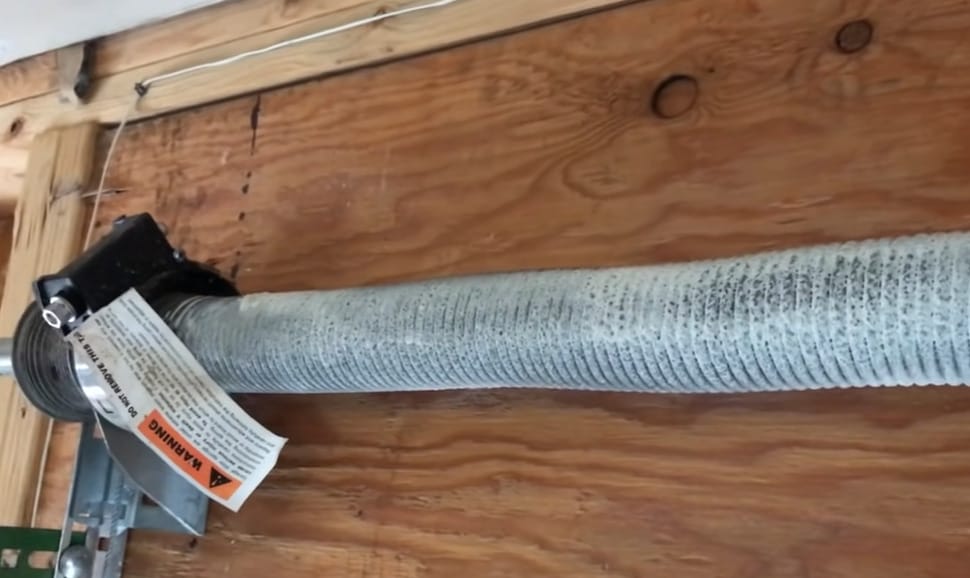
Finally, lubricate the door lock to prevent rusting and make locking and unlocking a breeze.
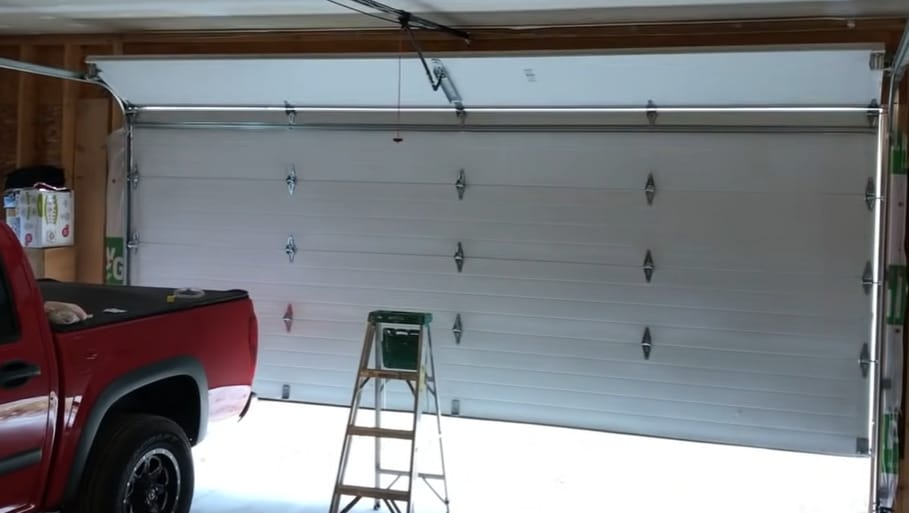
Once that’s done, power up the door and give it a test run. Keep an eye and ear out as it operates, looking for smoother movement and reduced noise. If unsatisfied, it might be time to call in a garage door expert.
A well-lubricated door extends its lifespan and ensures smooth, quiet operation.
Keep It Running Smoothly: Post-Lubrication Garage Door Maintenance
Maintaining its top-notch condition is key once you’ve lubricated your garage door. Here’s a straightforward guide to help you out:
- Regular Checks: Make it a habit to inspect your garage door parts periodically. Look for any signs of wear and tear, particularly in the springs, cables, and rollers.
- Clean the Tracks: Ensure the tracks on either side of the door are free from debris and buildup. A gentle wipe with a damp cloth can do the trick, maintaining a clear path for smooth operation.
- Tighten Up: Check all the hardware, including bolts and screws, ensuring everything is tight and secure. The vibration from the door’s movement can loosen these over time, so this step is crucial.
- Balance Test: Perform a balance test by lifting the door halfway up. If it stays in place, you’re good to go; if not, it might be time to call a professional to adjust the springs.
- Lubricate Regularly: Don’t wait for the squeaks to remind you. Set a reminder to lubricate the necessary parts of your garage door at least once a year, ensuring its longevity and smooth performance.
- Weather Seals Check: Inspect the weather seals around the door to ensure they are in good condition. Replace any that are worn out to keep the elements outside and maintain energy efficiency.
- Professional Inspection: Consider having a professional garage door technician inspect your door annually. They can catch potential issues early on and ensure everything is working well.
By following these tips, you’re setting yourself up for a garage door that operates smoothly, lasts longer, and requires fewer repairs. Happy maintaining!
Prioritizing Safety: Essential Steps Before Lubrication
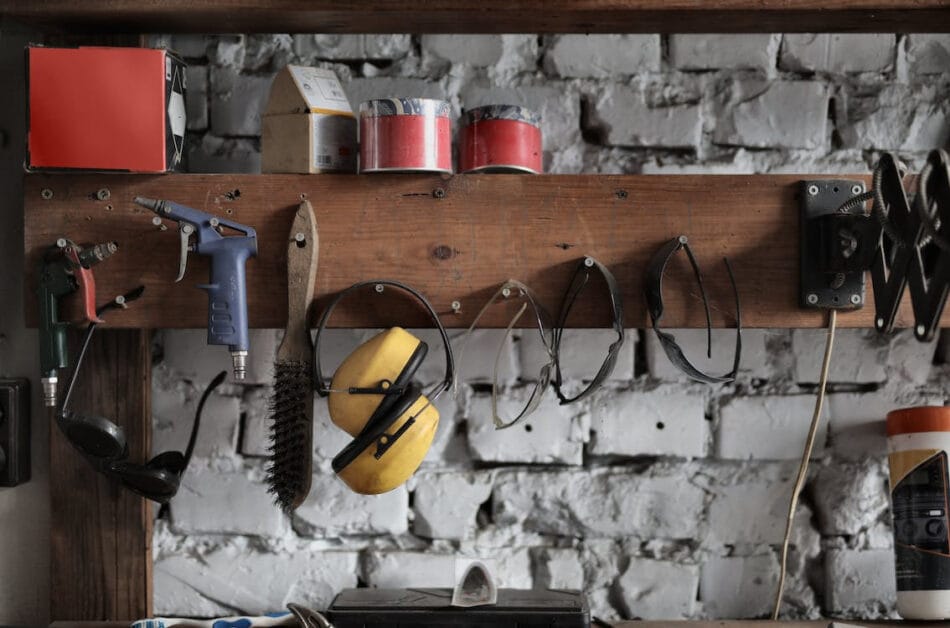
Ensuring a safe working environment is crucial for maintaining your garage door. Here’s a detailed guide to get you prepared:
- Power Off: Ensure the power source to the garage door opener is disconnected. This precaution is vital to avoid any accidental activation during the lubrication process.
- Manual Mode: Manually lift the garage door and ensure it is secure. This will give you full control and prevent the door from moving unexpectedly.
- Spring Caution: Approach the springs cautiously; they are tense and dangerous. If they seem too intimidating or you’re unsure of how to handle them, it’s advisable to call in a professional garage door technician.
Frequently Asked Questions
- How Often Should I Lubricate My Garage Door?
- Generally, a twice-a-year schedule should keep things running smoothly. However, don’t hesitate to give those parts extra TLC if you notice any unusual noises or resistance.
- Is It Safe to Lubricate My Garage Door Myself?
- Absolutely, as long as you follow safety precautions. Wear protective gear, disconnect the power source, and be careful around the springs. When in doubt, don’t hesitate to call in a pro.
- Is There a Particular Technique for Applying Lubricant?
- Aim for a light, even coat on all moving parts. Precision is key—ensure the lubricant reaches the necessary areas without over-applying.
- Can I Use Household Oils to Lubricate My Garage Door?
- While tempting, household oils are not recommended as they might not provide the durability and performance required for a garage door’s moving parts.
- Are There Any Environmental Considerations When Choosing a Lubricant?
- Opt for environmentally friendly lubricants when possible. They provide the same level of performance while ensuring you’re doing your part for the planet.
References
Organizations:
- International Door Association (IDA). https://doors.org/
- The Door and Access Systems Manufacturers Association (DASMA). https://www.dasma.com/
Books:
- Black & Decker The Complete Guide to Garages. https://www.abebooks.com/9781591866848/Black-Decker-Complete-Guide-Garages-1591866847/plp
- Home Maintenance For Dummies. https://www.barnesandnoble.com/w/home-maintenance-for-dummies-james-carey/1016375971
Website Resources:
- Lowe’s Home Improvement. https://www.lowes.com/
- This Old House. https://www.thisoldhouse.com/
Video References:
Eastern Garage Doors
DIY with Michael Borders
